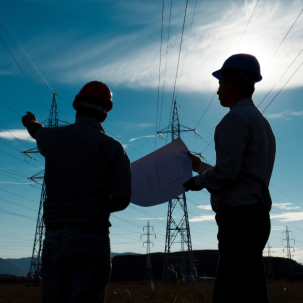Electrification around the globe is accelerating, driven by the adoption of electric vehicles, heat pumps, and the expansion of data centres. This escalating demand underscores the need for more efficient use of flexible distributed energy resources (DERs).
In this guide, we break down what flexibility is, how markets can help operationalise the flexibility from DERs, and the key benefits of adopting this approach.
What this guide covers:
- A 30-second flexible energy overview
- What is energy or grid flexibility?
- What are flexibility markets?
- Why flexibility matters: 3 key drivers
- The four main flexibility market types
- Who participates in this flexibility market ecosystem?
- Where Electron fits in
- FAQs
Key facts: Flexibility at a glance
| Metric | Value |
| Main flexibility market types | 4 (Demand response, constraint management, curtailment avoidance, community) |
| Estimated UK consumer savings from flexibility in 2024 | £300 million |
| UK saving potential by 2050 | £10 billion annual savings |
| Estimated UK flexibility requirements by 2030 | 30GW flexibility |
| UK flexibility capacity secured in 2024 | 9GW (3x growth from 2023) |
A 30-second flexibility summary
The challenge: Hitting Net Zero requires the use of variable renewable energy, while energy assets like EVs, heat pumps, and data centres are creating unpredictable electricity demand spikes that can affect grid stability.
The solution: Energy or grid flexibility – the ability to adjust when and where electricity is used or generated. This can happen implicitly (through time-of-use tariffs) or explicitly (through flexibility markets that pay for specific adjustments).
The impact: Lower bills for consumers, new revenue streams for asset owners, faster renewable integration, and a resilient grid. Flexibility markets alone saved UK consumers £300 million in 2024.
What is energy or grid flexibility?
Energy flexibility – also known as flexible energy or grid flexibility – is a way for network operators and distribution utilities to coordinate the generation and consumption of electricity.
Flexibility means adjusting when or how much electricity you use or generate. This helps distribution utilities coordinate the generation and consumption of electricity, to reduce congestion on the grid and improve its reliability.
It normally requires asking flexible distributed energy resources (DERs) – acting as “flexibility service providers” (FSPs) – to reduce their use of energy, or to use it at a different time and in a particular location. In other words, flexibility encourages a change in behaviour.
This flexibility can be delivered in two ways:
- Implicit flexibility happens automatically through static price signals, like time-of-use tariffs. E.g. your smart EV charger delays charging until overnight when electricity is cheaper. The price signal drives the behaviour.
- Explicit flexibility involves deliberate actions in response to specific requests from the grid operator. These actions are consciously taken and directly compensated – normally through markets coordinated via a market platform.
Both types are essential for our energy transition, but as renewable penetration increases and grids become more complex, explicit flexibility through markets becomes increasingly critical.
Read more about the interaction between time-of-use tariffs and flexibility markets.
What are flexibility markets?
Flexibility markets are commercial mechanisms where the ability to adjust electricity generation or consumption becomes a tradeable service. Rather than bilateral contracts, they use dynamic price signals to help grid operators procure flexibility from flexibility providers, at scale.
In these markets, “flexibility” can be bought and sold. When and where electricity is generated or consumed has value, and markets ensure efficient pricing by location and time through competition between multiple providers.
These markets can operate at different timescales, from long-term tenders to day-ahead auctions or even real-time trading.
Market platforms like ElectronConnect provide the digital infrastructure to operate these markets at scale. They can handle everything from publishing requirements and matching buyers and sellers to settlement.
Why flexibility matters: 3 key drivers
1. Renewable variability meets growing electrification
The energy transition creates a perfect storm: renewable generation that can’t be controlled (wind and solar output varies by weather) whilst demand becomes more unpredictable (EVs charging, heat pumps cycling, data centres scaling).
Flexibility makes this work by coordinating thousands of DERs to respond to system needs. When wind drops, batteries discharge and buildings reduce consumption. When solar peaks at midday, EVs charge and industrial processes ramp up. The grid stays balanced without burning fossil fuels.
2. Grid infrastructure can’t keep pace with demand
Building physical infrastructure for maximum peak load is costly and would take decades, yet only be needed a few hours annually.
Flexibility supports grid upgrades by helping reduce peaks and manage constraints. Grid investment will always be needed, so flexibility helps optimise spend and buys time for grid operators to upgrade strategically.
3. There’s a need to deliver Net Zero while keeping costs low for consumers
Flex markets optimise existing network infrastructure whilst making better use of zero-marginal cost renewable energy.
Flexibility creates value throughout the system. Grid operators better target capital and operational costs. Asset owners unlock additional revenues and faster connection times. Consumers then benefit from lower network costs.
The four main flexibility market types
Different regions require different market designs. For example, New York’s dense population with high electricity demand suits demand response markets. Scotland’s abundant wind but sparse population benefits from curtailment markets.
Multiple market types can operate simultaneously based on local requirements, all potentially running on the same platform infrastructure.
Quick comparison of different market types
| Market type | Use case | Best for | Example |
| Demand response | Reduce peak consumption | Dense urban areas | NYC buildings cut AC during heatwave |
| Constraint management | Prevent grid overload | Congested networks | Cornish homes delay EV charging and batteries discharge during network congestion |
| Curtailment avoidance | Use excess renewables | High renewable areas | Scottish wind avoids shutdown |
| Community energy | Local energy sharing | Rural communities | Village solar trading scheme |
Demand response
This focuses on load shifting. System operators can ask demand customers to reduce consumption at peak times, whether across the system or in a specific location, to help the system manage its load.
Local constraint management
System operators can ask flexibility service providers (FSPs) to change their import or export levels to manage network congestion. This design covers both targeted network reinforcement deferral and management of areas of the grid that are under pressure or “constrained”.
Local curtailment avoidance
When surplus electricity causes constraints, renewable generators can trade curtailment obligations. This avoids wasting renewable energy, particularly valuable in wind-rich regions like Scotland or solar-abundant California. Project BiTraDER, for example, has created a market to enable the peer-to-peer systems making this possible.
Community energy
Aligns local consumption with local renewable production by sharing energy among community members. It strengthens local resilience whilst mitigating supply/demand fluctuations.
Read more about the four main flexibility market archetypes and how they work.
Who participates in this flexibility market ecosystem?
Buyers of flexibility
- Distribution system operators (DSOs) or distribution utilities procuring flexibility to manage local constraints
- Transmission-level system operators (TSOs) balancing regional/national systems
Learn more about the role of the DSO in the UK.
Sellers of flexible capacity (known as flexibility service providers or FSPs)
These can include:
- Industrial sites shifting production schedules
- Battery storage providing rapid response
- EV charging networks managing charging patterns
- Commercial buildings adjusting HVAC loads
- Aggregators pooling residential and small commercial assets
- Renewable generators offering curtailment flexibility
- Etc
Learn more about how to get involved as a flexibility provider.
Where Electron fits in
Electron provides ElectronConnect, the market platform technology that enables flexibility markets to operate at scale.
ElectronConnect is a neutral, user-friendly platform that system operators worldwide use to create, run, and manage their flexibility markets.
We handle the technical complexity, from publishing requirements and collecting bids through to dispatch optimisation and settlement processing. We provide the technology that enables transparent price discovery, efficient operations, and fair market access for all participants.
FAQs
Flexibility markets focus on location-specific, time-sensitive adjustments to manage grid constraints. Traditional energy markets handle bulk energy trading without location specifics.
Yes, typically through aggregators who pool household devices like EVs, heat pumps, and home batteries to meet minimum capacity requirements
Some markets require 1MW minimum capacity, though this varies by region and system operator. Smaller assets can participate through aggregators who pool multiple resources to meet thresholds.
Providers receive dispatch signals (usually 15-60 minutes notice), adjust their consumption/generation as contracted, maintain the response for the required duration (typically 1-2 hours), then return to normal operation.
Response times vary by service, from sub-second for frequency response to day-ahead for planned constraint management.
Ready to explore flexibility markets? Whether you’re a grid operator seeking solutions or an asset owner identifying opportunities, our experts can help you navigate these markets. Contact the Electron team




